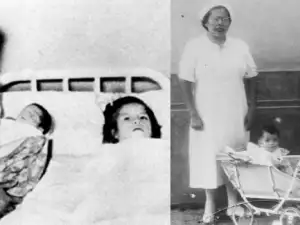Whenever human curiosity and the thirst for knowledge know no bounds of ethical standards, some medical experiments can turn into the very embodiment of cruelty.
A medical experiment can be considered cruel if it experiments with human behavior, destroying the mental state of the volunteer or removes bodily organs, disrupting their physiology and the ability for the person to lead a normal life. There have been dozens of such cases in our history in the last century alone.
The Stanford Prison Experiment
In 1971, psychologist Philip Zimbardo decided to carry out a curious experiment with his students. He divided them into 2 groups and sent them to Stanford prison - one group served as prison guards, the others were regular prisoners.
Initially, the students played their roles jokingly but as time went on, the prison guards began to inflict both physical and mental abuse on the prisoners - their former friends until recently.
And even though Zimbardo's experiment proved how human behavior was influenced by their environment, this brought intense trauma on the young people who participated in the experiment.
Testicle Transplantation
At the beginning of the 20th century, the doctor of San Quentin State Prison - Dr. Leo Stanley, took it upon himself to fight crime in a bizarre and completely inhuman way. He would remove the testicles of prisoners and transplant them onto other living things.
Stanley believed that by sterilizing men in this fashion he could reduce crime rates. He worked at the prison for about 40 years until he retired and was not punished in any way for his unethical practice.

South Africa Aversion Project
Psychiatrist Aubrey Levin, working in South Africa, subjected his patients to a new type of horrifying therapy. He tortured and performed surgeries on the mentally ill, seeing how they would react.
Levin worked painstakingly to develop a treatment for homosexuality, as he saw it as a psychological illness. Patients under his care were castrated in shocking and brutal ways, while authorities in the country fully supported his activities.
Grigory Mairanovsky's Poison
After the First World War, Grigory Mairanovsky began working to develop a poison that would leave behind no evidence after its use. Authorization came from the Soviet government which also provided him with test subjects - prisoners from the gulags, who were branded as traitors to their people.
Mairanovsky never did find the right combination, while the number of dead from his poisons is still unknown.
Secret CIA Experiments
In their efforts to create a potent biological and chemical weapon, the CIA bankrolled large numbers of scientists, ensuring them freedom of action. They developed various contagious bacteria, poisons designed to kill, drugs for interrogation and different kinds of mind control techniques.
During experiments, test subjects were deprived of food and sleep, given hallucinogens, then interrogated.

Besides disarming the enemy, the CIA was in search of ways to control and manipulate human behavior. The first mind control experiments were done using the drug LSD. The people given hallucinogenic substances were primarily heroin addicted prostitutes and prisoners.
The Inhumane Nazi Experiments
During World War II, prisoners in the concentration camps were forced to participate in Nazi medical experiments. Every one of these tests concluded in death, disfigurement or loss of the ability to perform basic human actions.
Subjects were injected with substances designed to change the color of their eyes, attempts were made to artificially create Siamese twins, to transplant bones, nerves and organs. Victims were infected with various deadly diseases.









